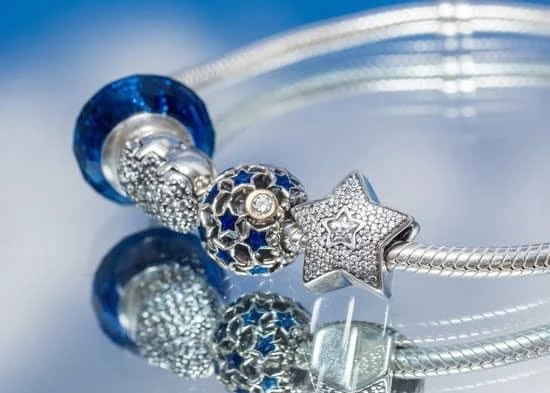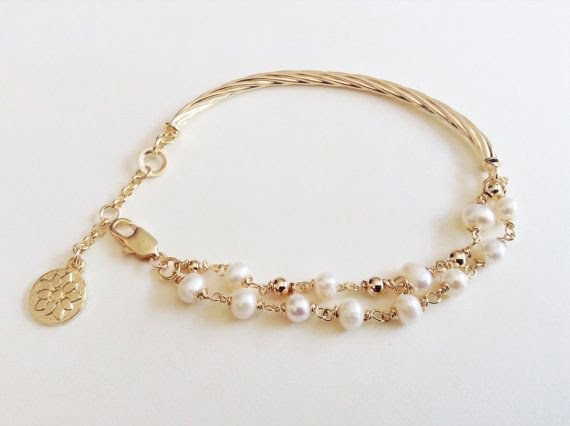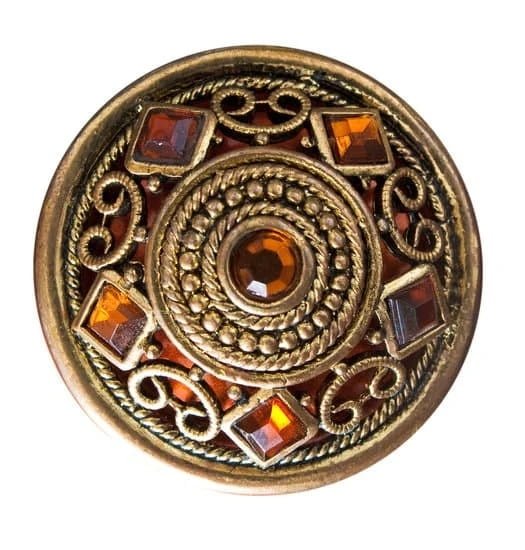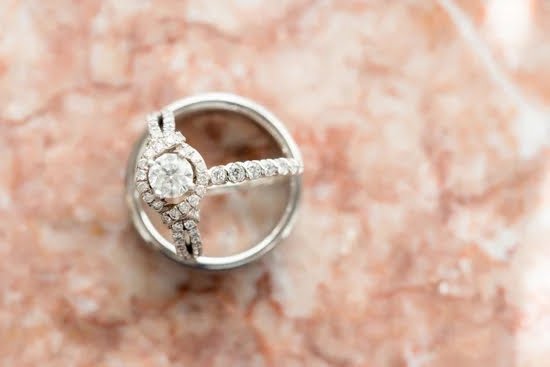Welcome to the world of ultrasonic jewelry cleaners, where science meets magic. In recent years, these compact and powerful devices have gained immense popularity among jewelry enthusiasts and professionals alike. Offering a quick and efficient cleaning solution, ultrasonic jewelry cleaners have revolutionized the way we clean our precious gems and metals.
But how exactly do these devices work their magic? In this blog post, we will delve into the fascinating inner workings of ultrasonic jewelry cleaners to uncover the secrets behind their effectiveness.
With our busy lives and ever-increasing demands, convenience is key when it comes to household chores. Ultrasonic jewelry cleaners have become a sought-after tool in every jewelry lover’s arsenal because they provide a hassle-free and time-saving solution. Gone are the days of laboriously scrubbing dirt and grime from your favorite pieces. With an ultrasonic cleaner, you can effortlessly restore the shine and luster of your jewelry in no time.
Whether you’re a novice or a veteran in the world of ultrasonic cleaning, understanding the basics is crucial for optimal results. By harnessing the power of high-frequency sound waves, ultrasonic cleaners effectively agitate dirt and grime even from hard-to-reach crevices.
This article will guide you through various components of these devices while unraveling the science behind ultrasonic cleaning. So brace yourself for an exciting journey into the world of ultrasonic jewelry cleaners as we uncover their secrets one by one.
Understanding the Basics
Ultrasonic cleaning is a highly effective and popular method for keeping jewelry sparkling clean. But what exactly is ultrasonic cleaning? In this section, we will delve into the basics and principles behind this innovative cleaning technique.
What is Ultrasonic Cleaning?
At its core, ultrasonic cleaning is a process that uses high-frequency sound waves to agitate dirt, grime, and contaminants from various surfaces, including jewelry. This method harnesses the power of cavitation to achieve thorough and efficient cleaning.
The Power of Sound Waves
Ultrasonic cleaners generate sound waves at frequencies above the range of human hearing, typically around 40 kHz or higher. These sound waves travel through a liquid cleaning solution within a tank and create microscopic bubbles called cavitation.
Cavitation: The Cleaning Action
Cavitation occurs when the sound waves cause alternating high and low-pressure cycles in the liquid. During the low-pressure cycle, millions of tiny bubbles form as vapor-filled voids. These bubbles then rapidly collapse during the subsequent high-pressure cycle, releasing energy in the form of shockwaves and heat.
The repeated collapse and release of these bubbles create intense localized pressure, scrubbing away dirt, debris, oils, and other contaminants from the surface being cleaned. Unlike manual or traditional cleaning methods, ultrasonic cleaners are incredibly effective at reaching hidden nooks and crannies that are difficult to access by hand.
The Advantages of Ultrasonic Cleaning
One major advantage of ultrasonic cleaning is its ability to clean intricate jewelry pieces with ease. The microscopic size of cavitation bubbles enables them to penetrate even the tiniest crevices without causing any damage to delicate gemstones or precious metals.
Additionally, ultrasonic cleaners eliminate the need for harsh chemicals or abrasive scrubbing that can potentially harm jewelry over time. Instead, they rely on the power of cavitation to provide a thorough, yet gentle, cleaning process. This not only saves time and effort but also helps to preserve the integrity and beauty of your precious jewelry.
In the next section, we will take a closer look at the components that make up an ultrasonic jewelry cleaner and how they work together to achieve optimal cleaning results.
Components of an Ultrasonic Jewelry Cleaner
An ultrasonic jewelry cleaner consists of several key components that work together to achieve optimal cleaning results. Understanding these components is essential for users to maximize the efficiency of their cleaner and ensure their jewelry is thoroughly cleaned.
The first major component of an ultrasonic jewelry cleaner is the tank. The tank holds the cleaning solution and provides a safe and contained environment for the cleaning process. It is typically made of stainless steel or another durable material that can withstand the intense vibrations and heat generated during cleaning.
The second important component is the transducer. The transducer is responsible for converting electrical energy into high-frequency sound waves that create microscopic bubbles, known as cavitation, in the cleaning solution. These sound waves are emitted at a frequency above human hearing range, typically around 40-45 kHz, ensuring thorough cleaning without causing any harm to the jewelry.
Lastly, the cleaning solution used in an ultrasonic jewelry cleaner plays a crucial role in breaking down dirt and grime on jewelry surfaces. The solution is usually a mix of water and a specialized cleaning agent designed to enhance the effectiveness of ultrasonic cleaning. It helps in removing oils, grease, fingerprints, and other stubborn residues from jewelry.
| Component | Description |
|---|---|
| Tank | Holds the cleaning solution and provides a contained environment for the cleaning process. |
| Transducer | Converts electrical energy into high-frequency sound waves that create cavitation in the cleaning solution. |
| Cleaning Solution | A mix of water and specialized agents designed to break down dirt and grime on jewelry. |
These components work in harmony to create a powerful cleaning solution for jewelry. By understanding how each component functions, users can make informed decisions when operating an ultrasonic jewelry cleaner and achieve the best possible results with minimal effort.
The Magic of Sound Waves
Ultrasonic cleaning is a fascinating process that utilizes the power of sound waves to effectively clean jewelry. This section will delve into the science behind ultrasonic cleaning and explain how it works its magic on your valuable pieces.
At the heart of ultrasonic cleaners is the phenomenon known as cavitation. When high-frequency sound waves are generated by the device, they create microscopic bubbles in the cleaning solution. These bubbles are called cavitation and are formed through a process of expansion and contraction due to the alternating sound waves.
As these bubbles continue to expand and contract rapidly, they generate a considerable amount of energy. When these tiny bubbles collapse near the surface of the jewelry, this energy is released in the form of shockwaves. It is this release of energy that dislodges dirt, grime, and contaminants from the jewelry’s surface.
The magic lies in cavitation’s ability to reach places that traditional cleaning techniques cannot easily access. These microscopic bubbles can penetrate crevices, cracks, and hard-to-reach areas, ensuring a thorough clean for even intricate pieces of jewelry. The combination of high-frequency sound waves and cavitation makes ultrasonic cleaners highly effective in restoring your jewelry’s shine and brilliance.
By understanding how ultrasonic cleaning works, you can appreciate why this method has gained immense popularity among jewelry enthusiasts. Its ability to achieve exceptional cleaning results in a short amount of time with minimal effort makes it an essential tool for anyone looking to keep their precious gems and metals looking their best.
Choosing the Right Cleaning Solution for Maximum Results
Types of Cleaning Solutions
When it comes to achieving maximum cleaning results with an ultrasonic jewelry cleaner, choosing the right cleaning solution is crucial. There are several types of cleaning solutions available on the market, each designed for specific purposes and materials. It is important to select a cleaning solution that is safe for both your jewelry and the ultrasonic cleaner itself.
- Mild Detergent: Mild detergent solutions are often recommended for general jewelry cleaning. These solutions are gentle enough to use on most precious metals and gemstones. They effectively remove dirt, grime, and oils from the surface of the jewelry without causing any damage.
- Ammonia-based Solution: Some cleaning solutions contain ammonia, which can be effective in removing tarnish from silver jewelry. However, caution should be exercised when using ammonia-based solutions as they may cause discoloration or damage to certain gemstones or materials.
- Specialty Solutions: There are also specialty cleaning solutions available for specific types of jewelry or metals. For example, there are solutions specifically formulated for cleaning gold, platinum, or delicate gemstones like pearls or opals. These specialized solutions often provide optimal results for their intended use.
Dilution Ratios and Precautions
When using a cleaning solution with an ultrasonic jewelry cleaner, it is important to follow the manufacturer’s instructions regarding dilution ratios. Diluting the cleaning solution properly ensures that it is at its most effective concentration for removing dirt and grime.
Additionally, it is essential to take certain precautions when choosing a cleaning solution. Always verify that the chosen solution is suitable for both your jewelry materials and the ultrasonic cleaner tank. Avoid using harsh chemicals or abrasive cleaners that could potentially damage your precious pieces.
Remember to never place porous gemstones, soft metals, or any jewelry with glued settings into an ultrasonic cleaner. Examples of gemstones that should not be cleaned with an ultrasonic cleaner include opals, pearls, emeralds, and turquoise. Always consult a professional or refer to the manufacturer’s guidelines to ensure the safety and effectiveness of your cleaning solution.
Alternative Cleaning Solutions
In addition to commercially available cleaning solutions, there are alternative solutions that can be used in an ultrasonic jewelry cleaner. For example, a mixture of water and mild dish soap can serve as an effective cleaning solution for many types of jewelry. Baking soda dissolved in warm water is another popular alternative that can help remove tarnish from silver pieces.
Remember to thoroughly rinse your jewelry after cleaning to remove any residue from the cleaning solution. Proper rinsing will help prevent skin irritation or damage to the jewelry’s finish.
By choosing the right cleaning solution for your jewelry, you can ensure maximum results while keeping your precious pieces safe and sparkling.
Operating an Ultrasonic Jewelry Cleaner
Using an ultrasonic jewelry cleaner is a simple and efficient way to clean your precious jewelry. Whether you have a collection of delicate earrings or tarnished necklaces, an ultrasonic cleaner can restore their sparkle in no time. Here’s a step-by-step guide on how to operate an ultrasonic jewelry cleaner:
- Prepare the cleaner: Start by ensuring that the cleaner is properly set up and ready for use. Fill the tank with the recommended cleaning solution, making sure not to exceed the maximum fill line indicated. It’s important to use a cleaning solution specifically formulated for ultrasonic cleaning to achieve optimal results.
- Organize your jewelry: Before placing your jewelry into the cleaner, take some time to organize and arrange it properly. Make sure that each piece of jewelry is separate from one another to prevent tangling or scratching during the cleaning process.
- Place your jewelry in the tank: Gently place your jewelry into the tank, ensuring that they are fully submerged in the cleaning solution. Avoid overcrowding the tank as this can hinder the effectiveness of the cleaning process. If you have larger pieces or multiple items, it may be necessary to clean them in batches.
- Set the timer: Most ultrasonic cleaners come with built-in timers that allow you to select a specific cleaning duration. Refer to your user manual or manufacturer’s instructions for recommended cleaning times based on the type and condition of your jewelry. Generally, a cleaning cycle lasts between 3-5 minutes.
- Start the cleaning cycle: Once you’ve set the timer, turn on the ultrasonic cleaner and let it do its magic. As soon as you start the machine, high-frequency sound waves will begin generating microscopic bubbles called cavitation throughout the tank.
- Wait for completion: Allow the ultrasonic cleaner to complete its designated cleaning cycle before removing your jewelry from the tank. The cavitation process will effectively dislodge dirt, grime, and other contaminants from your jewelry, leaving them clean and shiny.
- Rinse and dry: After the cleaning cycle is complete, carefully remove your jewelry from the tank using tweezers or another tool to avoid contact with the transducer. Rinse your jewelry thoroughly under running water to wash away any remaining cleaning solution. Finally, dry your jewelry using a soft cloth or air-dry them before storing.
Operating an ultrasonic jewelry cleaner is not only easy but also highly effective in restoring the luster of your favorite pieces. By following these simple steps, you can ensure that your jewelry receives a thorough and gentle cleaning every time. Remember to always refer to the manufacturer’s instructions for specific guidelines on operating your particular model of ultrasonic cleaner.
The Dos and Don’ts of Ultrasonic Jewelry Cleaning
Ultrasonic jewelry cleaners are powerful devices that can effectively clean and restore the shine of your precious jewelry. However, it is important to be aware of the dos and don’ts when using these machines to ensure optimal results and prevent any potential damage. Here are some key guidelines to follow for successful ultrasonic jewelry cleaning:
DO:
- Read the instruction manual: Before using an ultrasonic jewelry cleaner, take the time to carefully read the user manual. This will provide valuable information on how to operate the machine correctly and safely.
- Use appropriate cleaning solutions: Select a cleaning solution specifically designed for use with ultrasonic cleaners. These solutions are specially formulated to remove dirt, grime, and contaminants without causing any harm to your jewelry. Avoid using household chemicals or harsh detergents as they can damage your jewelry.
- Check for loose stones: Before placing your jewelry in the ultrasonic cleaner, make sure that all stones are securely set. Loose stones may become dislodged during the cleaning process due to the vibrations, resulting in potential loss or damage.
DON’T:
- Clean delicate or porous gemstones: Certain gemstones such as opals, pearls, emeralds, and amber should not be cleaned with an ultrasonic cleaner as they are delicate and porous. The intense vibrations can cause cracks or loss of luster in these stones. It is best to consult with a professional jeweler for alternative cleaning methods for these types of gemstones.
- Immerse costume or plated jewelry: Costume or plated jewelry typically has a thin layer of metal coating over its surface, which can be easily stripped away by ultrasonic cleaning. If unsure about a piece of jewelry’s plating or composition, it is safer to avoid using an ultrasonic cleaner on it.
- Clean damaged or fragile pieces: Avoid using an ultrasonic cleaner on jewelry that is already damaged, fragile, or has loose stones. The powerful vibrations can worsen existing damage or loosen stones even further.
By following these dos and don’ts, you can ensure a safe and effective cleaning process for your jewelry with an ultrasonic jewelry cleaner. Remember to always exercise caution and consult with a professional jeweler if you have any concerns about the suitability of a particular piece for ultrasonic cleaning.
Maintenance and Care for your Ultrasonic Jewelry Cleaner
Ultrasonic jewelry cleaners are not only effective in cleaning and restoring the shine of your precious pieces, but they also require regular maintenance to ensure their longevity and optimal performance. Taking care of your ultrasonic jewelry cleaner will not only extend its lifespan but also ensure that it continues to deliver exceptional cleaning results. In this section, we will discuss the importance of proper maintenance and provide some helpful tips on how to care for your ultrasonic jewelry cleaner.
One of the most crucial aspects of maintaining an ultrasonic jewelry cleaner is cleaning the tank properly. Over time, dirt, debris, and residue from the cleaning solution can accumulate in the tank, affecting its performance. To clean the tank, start by emptying it and wiping away any visible dirt or grime with a soft cloth.
Then, make a mixture of warm water and mild dish soap or vinegar and scrub the inside of the tank using a soft-bristle brush. Rinse thoroughly with clean water before refilling the tank for future use.
The transducer is another important component that requires attention when it comes to maintenance. The transducer is responsible for converting electrical energy into high-frequency sound waves that create cavitation bubbles for cleaning. To keep your transducer in good condition, regularly inspect it for any buildup or damage.
If there are any visible debris or dirt on the surface of the transducer, gently clean it with a soft cloth or brush using a mild cleaning solution. Be careful not to apply excessive pressure as it may cause damage to the transducer.
| Component | Maintenance |
|---|---|
| Tank | – Empty and wipe away visible dirt or grime
|
| Transducer | – Regularly inspect for buildup or damage
|
| Cleaning Solution | – Change the cleaning solution regularly
|
Lastly, it is important to pay attention to the cleaning solution used in your ultrasonic jewelry cleaner. The cleaning solution plays a vital role in achieving optimal results and preserving the integrity of your jewelry. It is recommended to change the cleaning solution regularly, as it can become contaminated with dirt, oils, and residues from previous cleanings. Additionally, make sure to follow the manufacturer’s instructions regarding the appropriate dilution ratio and usage of the cleaning solution.
By performing regular maintenance tasks such as cleaning the tank, inspecting and cleaning the transducer, and using fresh and appropriate cleaning solutions, you can ensure that your ultrasonic jewelry cleaner remains in excellent condition and continues to deliver outstanding results. Maintaining your cleaner not only enhances its longevity but also contributes to maintaining the cleanliness and sparkle of your precious jewelry.
Practical Tips and Tricks for Effective Cleaning
When it comes to effectively cleaning your jewelry using an ultrasonic jewelry cleaner, there are some practical tips and tricks that can help elevate your cleaning process and ensure optimal results. These tips will not only enhance the efficiency of your ultrasonic cleaner but also help you maintain the longevity of your precious pieces.
One valuable tip to consider is using a basket or mesh while cleaning your jewelry in an ultrasonic cleaner. This helps avoid physical contact between the items and the tank, reducing the risk of scratches or damage. Placing your jewelry in a basket or mesh also allows for better circulation of the cleaning solution, ensuring all surfaces are properly cleaned.
For stubborn stains or heavily soiled pieces, you may want to try the “two-cycle method.” Start by running a shorter cleaning cycle to loosen dirt and grime. After the first cycle, remove the jewelry from the cleaner and carefully inspect it. If any areas still require further cleaning, apply a small amount of additional cleaning solution directly onto those areas. Then, run another cycle to target those specific spots.
Additionally, it’s important to note that not all gemstones or materials can be safely cleaned using an ultrasonic jewelry cleaner. Avoid using this method for fragile stones such as opals, pearls, or emeralds, as well as any piece with loose gemstones or glued settings. Before cleaning any item in an ultrasonic cleaner, refer to the manufacturer’s guidelines or consult a professional jeweler to ensure its compatibility.
By following these practical tips and tricks for effective cleaning with an ultrasonic jewelry cleaner, you can achieve sparkling results while safely preserving the beauty and integrity of your cherished pieces. Remembering these best practices will contribute to a seamless cleaning experience and leave you with immaculate jewelry that gleams like new every time.
Conclusion
In conclusion, ultrasonic jewelry cleaners are revolutionizing the way we clean and maintain our precious pieces. Through the use of high-frequency sound waves and the process of cavitation, these devices eliminate dirt and grime from jewelry with unparalleled efficiency. The components of an ultrasonic jewelry cleaner, such as the tank, transducer, and cleaning solution, work together seamlessly to achieve optimal cleaning results.
By choosing the appropriate cleaning solution for your specific jewelry needs and following a step-by-step guide for operation, you can ensure maximum cleaning effectiveness. It is crucial to adhere to the dos and don’ts of ultrasonic jewelry cleaning to prevent damage to certain gemstones or materials. Additionally, regular maintenance and care of your ultrasonic cleaner will prolong its life and maintain consistent cleaning performance.
Embracing the convenience of ultrasonic jewelry cleaners is a decision that will undoubtedly enhance your jewelry maintenance routine. Not only do these devices save time and effort, but they also provide thorough and efficient results. Whether you own delicate heirlooms or everyday pieces that need a little extra sparkle, an ultrasonic cleaner is a worthwhile investment.
So why wait? Experience the wonders of this cutting-edge technology for yourself by investing in an ultrasonic jewelry cleaner. Say goodbye to tedious scrubbing and hello to effortlessly beautiful jewelry. Embrace the convenience that these devices offer and enjoy sparkling pieces that shine as bright as your smile.
Frequently Asked Questions
What fluid do you use in an ultrasonic cleaner for jewelry?
In an ultrasonic cleaner for jewelry, you would typically use a cleaning solution specifically designed for this purpose. The most common fluid used is a mixture of water and mild detergent or soap.
This solution helps to effectively remove dirt, oils, and other residues from jewelry items. It is important to choose a cleaning solution that is suitable for the type of jewelry you are cleaning, as some solutions may be too harsh for delicate gemstones or metals.
What jewelry Cannot be cleaned in an ultrasonic cleaner?
While ultrasonic cleaners are generally effective for cleaning a wide range of jewelry items, there are certain types that should not be cleaned using this method. Jewelry pieces that have loose stones or fragile settings may be at risk of damage in an ultrasonic cleaner. For example, antique jewelry with aging or worn-out components might not withstand the vibrations produced by the machine.
Similarly, porous gemstones like pearls or opals can be susceptible to damage in an ultrasonic cleaner due to the agitation caused by the high-frequency soundwaves. It is always advisable to check with a professional jeweler before attempting to clean any valuable or delicate jewelry piece in an ultrasonic cleaner.
Do ultrasonic jewelry cleaners need solution?
Yes, ultrasonic jewelry cleaners do require a solution to enhance their cleaning effectiveness. The cleaning solution used in conjunction with the ultrasonic cleaner helps to break down and loosen dirt and grime from the surface of the jewelry item being cleaned.
Without a proper cleaning solution, the ultrasonic waves alone may not provide satisfactory results in removing stubborn stains or residues on jewelry. It is important to follow the instructions provided with your specific ultrasonic cleaner and ensure that you use an appropriate solution recommended for jewelry cleaning.

Welcome to my jewelry blog! My name is Sarah and I am the owner of this blog.
I love making jewelry and sharing my creations with others.
So whether you’re someone who loves wearing jewelry yourself or simply enjoys learning about it, be sure to check out my blog for insightful posts on everything related to this exciting topic!





